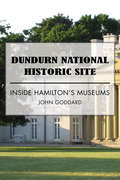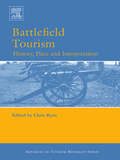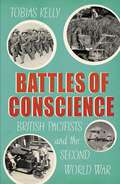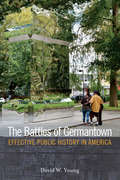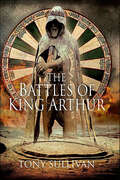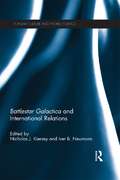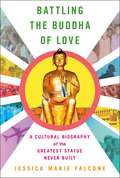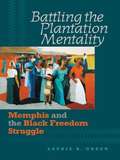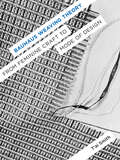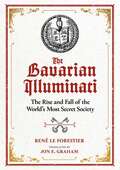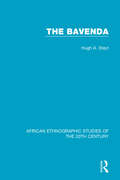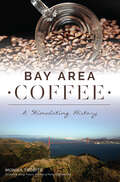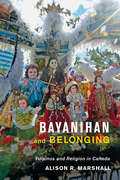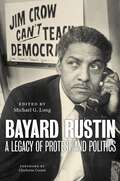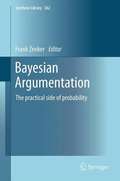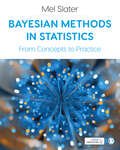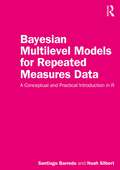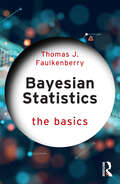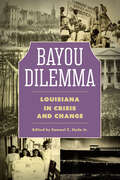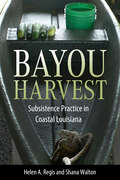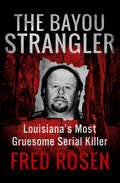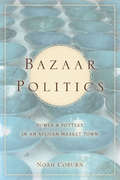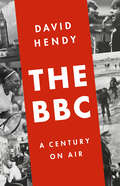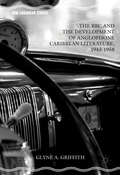- Table View
- List View
Battlefield House Museum and Park: Inside Hamilton's Museums
by John GoddardInside Hamilton’s Museums helps to satisfy a growing curiosity about Canada’s steel capital as it evolves into a post-industrial city and cultural destination. In this special excerpt we visit Battlefield House Museum and Park, which commemorates the British victory at the 1813 Battle of Stoney Creek that stopped the American army from capturing Upper Canada. John Goddard takes us on a detailed tour of the historic house and gardens, offering historical background to the battle and into the lives of James and Mary Gage.
Battlefield Tourism (Routledge Advances In Tourism Ser.)
by Chris RyanThrough a series of case studies that involve past conflict in China, the United States, The South Pacific and Europe, the nature of battlefield sites as tourist locations are explored. As places of past conflict and individual acts of heroism, these sites are places of story telling. How are these stories told? And for what purposes are the stories told? The acts and modes of interpretation are many, ranging from a discourse conducted through silences to the more complex nuanced story telling told through re-enactments of past battles. The book also asks where is the battle-field? - as case studies relate to conflicts that ranged over several hundreds of miles, to, on the other hand, acts of local civil disturbance that subsequently achieved mythic values in a history of national identity. The book is divided into 'acts', these being 'Acts of Resource Management', 'Acts of Silence', 'Acts of Discovery and Rediscovery', 'Acts of Imagination' and 'Acts of Remembrance' and embrace examples as diverse as an re-enactment of past battles on a New Zealand rural town cricket pitch to the towering strength of the aircraft carrier USS Yorktown, and from the Straits of Taiwan to the centre of Canada.
Battles of Conscience: British Pacifists and the Second World War
by Tobias KellyA ground-breaking new study brings us a very different picture of the Second World War, asking fundamental questions about ethical commitmentsAccounts of the Second World War usually involve tales of bravery in battle, or stoicism on the home front, as the British public stood together against Fascism. However, the war looks very different when seen through the eyes of the 60,000 conscientious objectors who refused to take up arms and whose stories, unlike those of the First World War, have been almost entirely forgotten.Tobias Kelly invites us to spend the war five of these individuals: Roy Ridgway, a factory clerk from Liverpool; Tom Burns, a teacher from east London; Stella St John, who trained as a vet and ended up in jail; Ronald Duncan, who set up a collective farm; and Fred Urquhart, a working-class Scottish socialist and writer. We meet many more objectors along the way -- people both determined and torn -- and travel from Finland to Syria, India to rural England, Edinburgh to Trinidad.Although conscientious objectors were often criticised and scorned, figures such as Winston Churchill and the Archbishop of Canterbury supported their right to object, at least in principle, suggesting that liberty of conscience was one of the freedoms the nation was fighting for. And their rich cultural and moral legacy -- of humanitarianism and human rights, from Amnesty International and Oxfam to the US civil rights movement -- can still be felt all around us. The personal and political struggles carefully and vividly collected in this book tell us a great deal about personal and collective freedom, conviction and faith, war and peace, and pose questions just as relevant today: Does conscience make us free? Where does it take us? And what are the costs of going there?'[An] excellent book' - DAILY TELEGRAPH'A moving tribute' - SPECTATOR
The Battles of Germantown: Effective Public History in America (History and the Public #3)
by David W. YoungKnown as America’s most historic neighborhood, the Germantown section of Philadelphia (established in 1683) has distinguished itself by using public history initiatives to forge community. Progressive programs about ethnic history, postwar urban planning, and civil rights have helped make historic preservation and public history meaningful. The Battles of Germantown considers what these efforts can tell us about public history’s practice and purpose in the United States. Author David Young, a neighborhood resident who worked at Germantown historic sites for decades, uses his practitioner’s perspective to give examples of what he calls “effective public history.” The Battles of Germantown shows how the region celebrated “Negro Achievement Week” in 1928 and, for example, how social history research proved that the neighborhood’s Johnson House was a station on the Underground Railroad. These encounters have useful implications for addressing questions of race, history, and memory, as well as issues of urban planning and economic revitalization. Germantown’s historic sites use public history and provide leadership to motivate residents in an area challenged by job loss, population change, and institutional inertia. The Battles of Germantown illustrates how understanding and engaging with the past can benefit communities today.
The Battles of King Arthur
by Tony SullivanThe ninth century Historia Brittonum is the first source that mentions Arthur and lists twelve battles, including the famous Badon Hill. Much ink has been spilt debating the identity and location of Arthur. This book will demonstrate that some of the battles can indeed be located with some confidence. Rather than fit a specific theory as to his identity the battles are placed in the fragmenting provincial, political and military context of the late fifth and early sixth century Britain. At a time of rapid changes in cultural identity and a significant increase in Germanic material culture and migration. These battles might be expected to be found along borders and in zones of potential conflict. Yet this is not what is discovered. In addition the simplistic idea of Romano-Britons holding back invading Anglo-Saxons is found wanting. Instead we discover a far more nuanced political and cultural situation. One with increasing evidence of continuation of land use and the indigenous population. The most Romanised and urbanised regions of the south and east are the very areas that experienced the arrival of Germanic settlement. The conclusion gives the reader a new insight into what sort of man Arthur was and the nature of the battles he fought.
Battlestar Galactica and International Relations (Popular Culture and World Politics)
by Nicholas J. Kiersey Iver B. NeumannLooking at a television franchise like Battlestar Galactica (BSG) is no longer news within the discipline of International Relations. A growing number of scholars in and out of IR are studying the importance of cultural artifacts – popular or otherwise – for the phenomena that make up the core of our discipline. The genre of science fiction offers the analyst an opportunity that cannot be matched by more mimetic genres, namely the chance to look at how sets of widely-circulating expectations of the social serve to constrain authors as they work to introduce as yet unexplored problematiques, the fantasy aspect in much of science fiction storytelling is premised simply on a material difference. As such, while the physical setting of a science fiction tale might appear novel, its imaginative life world will likely retain many elements of the world we already live in and which we can readily recognize as similar to our own. For Critical IR scholarship then, BSG presents an opportunity to examine how these purported homologies or elements of redundancy between the fantastic and the real have been drawn and perhaps to consider, too, whether the show can teach us things about world politics, its various logics and structures, which we might not otherwise be sensitive to. Tackling some of the key contemporary issues in IR, the writers of BSG have taken on a range of important political themes and issues, including the legitimacy of military government, the tactical utility of genocide, and even the philosophical implications of artificial intelligence technologies for the very category of what it means to be 'human'. The contributors in this book explore in depth the argument that one of the most important aspects of popular culture is to naturalize or normalise a certain social order by further entrenching the expectations of social behaviour upon which our mentalities of rule are founded. This work will be of interest to student and scholars of international relations, popular culture and security studies.
Battling the Buddha of Love: A Cultural Biography of the Greatest Statue Never Built
by Jessica Marie FalconeBattling the Buddha of Love is a work of advocacy anthropology that explores the controversial plans and practices of the Maitreya Project, a transnational Buddhist organization, as it sought to build the "world's tallest statue" as a multi-million-dollar "gift" to India. Hoping to forcibly acquire 750 acres of occupied land for the statue park in the Kushinagar area of Uttar Pradesh, the Buddhist statue planners ran into obstacle after obstacle, including a full-scale grassroots resistance movement of Indian farmers working to "Save the Land."Falcone sheds light on the aspirations, values, and practices of both the Buddhists who worked to construct the statue, as well as the Indian farmer-activists who tirelessly protested against the Maitreya Project. Because the majority of the supporters of the Maitreya Project statue are converts to Tibetan Buddhism, individuals Falcone terms "non-heritage" practitioners, she focuses on the spectacular collision of cultural values between small agriculturalists in rural India and transnational Buddhists hailing from Portland to Pretoria. She asks how could a transnational Buddhist organization committed to compassionate practice blithely create so much suffering for impoverished rural Indians.Falcone depicts the cultural logics at work on both sides of the controversy, and through her examination of these logics she reveals the divergent, competing visions of Kushinagar's potential futures. Battling the Buddha of Love traces power, faith, and hope through the axes of globalization, transnational religion, and rural grassroots activism in South Asia, showing the unintended local consequences of an international spiritual development project.
Battling the Plantation Mentality
by Laurie B. GreenAfrican American freedom is often defined in terms of emancipation and civil rights legislation, but it did not arrive with the stroke of a pen or the rap of a gavel. No single event makes this more plain, Laurie Green argues, than the 1968 Memphis sanitation workers' strike, which culminated in the assassination of Martin Luther King Jr. Exploring the notion of "freedom" in postwar Memphis, Green demonstrates that the civil rights movement was battling an ongoing "plantation mentality" based on race, gender, and power that permeated southern culture long before--and even after--the groundbreaking legislation of the mid-1960s. With its slogan "I AM a Man!" the Memphis strike provides a clarion example of how the movement fought for a black freedom that consisted of not only constitutional rights but also social and human rights. As the sharecropping system crumbled and migrants streamed to the cities during and after World War II, the struggle for black freedom touched all aspects of daily life. Green traces the movement to new locations, from protests against police brutality and racist movie censorship policies to innovations in mass culture, such as black-oriented radio stations. Incorporating scores of oral histories, Green demonstrates that the interplay of politics, culture, and consciousness is critical to truly understanding freedom and the black struggle for it.
Bauhaus Weaving Theory: From Feminine Craft to Mode of Design
by T’ai SmithThe Bauhaus school in Germany has long been understood through the writings of its founding director, Walter Gropius, and well-known artists who taught there such as Wassily Kandinsky and László Moholy-Nagy. Far less recognized are texts by women in the school&’s weaving workshop. In Bauhaus Weaving Theory, T&’ai Smith uncovers new significance in the work the Bauhaus weavers did as writers. From colorful, expressionist tapestries to the invention of soundproofing and light-reflective fabric, the workshop&’s innovative creations influenced a modernist theory of weaving. In the first careful examination of the writings of Bauhaus weavers, including Anni Albers, Gunta Stözl, and Otti Berger, Smith details how these women challenged assumptions about the feminine nature of their craft. As they harnessed the vocabulary of other disciplines like painting, architecture, and photography, Smith argues, the weavers resisted modernist thinking about distinct media. In parsing texts about tapestries and functional textiles, the vital role these women played in debates about medium in the twentieth century and a nuanced history of the Bauhaus comes to light. Bauhaus Weaving Theory deftly reframes the Bauhaus weaving workshop as central to theoretical inquiry at the school. Putting questions of how value and legitimacy are established in the art world into dialogue with the limits of modernism, Smith confronts the belief that the crafts are manual and technical but never intellectual arts.
The Bavarian Illuminati: The Rise and Fall of the World's Most Secret Society
by René Le Forestier• Details the rise and fall of this famous and infamous Order, including its penetration of Bavarian society and its destruction by the Bavarian government • Explains the Bavarian Illuminati&’s grades, rituals, ceremonies, and fundamental philosophies and examines the leaders of the Order • Contains the only surviving record of documents that were destroyed during the two World Wars The Bavarian Order of the Illuminati is the most celebrated secret society in the world. Though officially lasting only 11 years, the powerful spell and shadow cast by the Illuminati still looms in the present day, where its influence can be seen in current conspiracy beliefs and actions by powerful individuals working in the shadows. The original Order of the Illuminati was founded by Bavarian professor Adam Weishaupt in 1776. Although the order was banned and brought down by the Bavarian Elector in 1787--when he became aware of the extent to which it had infiltrated the courts, schools, and his own administration--its legend and deep influence lives on to this day. Charting the rise and fall of this infamous order, this book--first published in French in 1915 and never before available in English--remains the definitive history of the Order of the Bavarian Illuminati. It also offers a revealing look at the world that spawned and shaped it: a ceaseless ferment of revolutionary and occult ideas and the ceaseless attempts by crown and church to suppress them. Other secret societies that shared the stage with the Illuminati during these years include the Templar Strict Observance, von Hund&’s Templar Freemasonry, and other Masonic lodges the Illuminati targeted to subvert for their own purposes. Many of the documents the author consulted for the writing of this book were destroyed during the two World Wars, making this book the only surviving record of many of the order&’s secrets. The author explains the Bavarian Illuminati&’s grades, rituals, and ceremonies as well as its fundamental philosophies. He paints vivid portraits of the leaders of the order, including Weishaupt, Baron Knigge, and Xavier von Zwack. He reveals how Weishaupt early on decided to subvert the existing German Freemason Lodge as a shortcut to gain esoteric hegemony over the occult world, all in order to extend Illuminati influence into the society at large and the government. The author also provides extensive detail of the order&’s eventual destruction by the Bavarian government. In addition to its revelation of little-known secrets of the Illuminati Order, the author also sheds new light on much of the occult life of this time, including the activities of figures such as Cagliostro and Mirabeau and other active groups such as Freemason chapters, the Rosicrucians, and the Martinists.
The Bavenda
by Hugh A. StaytOriginally published in 1931 this book was the first detailed ethnographic study of the Bavenda people. It pays particular attention to the double system of kinship groups which is unusual among the Bantu peoples. Richly illustrated with over 60 black and white plates, this books discusses the history and geography of the Bavenda, as well as social, economic, religious, political and legal aspects of their life, as well as medicine, magic and folklore.
Bay Area Coffee: A Stimulating History (American Palate)
by Monika TrobitsDiscover the rich history of San Francisco&’s coffee culture from its roots in the nineteenth century to today&’s celebrated artisanal roasters. San Francisco was booming in the mid-nineteenth century, and along with adventurers seeking their fortunes came sacks of green coffee beans. The old Yerba Buena Cove swiftly filled with ships, and the city emerged as the third-largest coffee port in the United States. What followed was the rise—and local demise—of the &“big three&” coffee roasters: Folger&’s, Hills Brothers and MJB. Specialized Bay Area roasters like Peerless, Peet&’s and Blue Bottle sprang up in their wake, while places such as Tosca&’s, Caffé Trieste and the Blue Unicorn blazed the way for modern coffeehouses. In Bay Area Coffee, Monika Trobits explores how the humble coffee bean became an ever-evolving stable of San Francisco Bay.
Bayanihan and Belonging: Filipinos and Religion in Canada (Asian Canadian Studies)
by Alison R. MarshallFilipinos make up one of the largest immigrant groups in Canada and the majority continue to retain their Roman Catholic faith long after migrating. Drawing on archival and ethnographic research in Canada and the Philippines from 1880 to 2017, Bayanihan and Belonging aims to understand the role of religion within present-day Filipino Canadian communities. With a focus on Winnipeg, home to Canada’s oldest and largest Filipino Canadian community, Alison R. Marshall showcases current church-based and domestic religious routines of migrant Filipinos. From St. Edward the Confessor Church, the principal site of worship for Filipino Catholics in Manitoba, to home chapels, and healing traditions, Marshall explores the day-to-day celebrations of bayanihan, or communal spirit. Drawing on experiences from Manitoba’s Filipino population, Bayanihan and Belonging reveals that religious practise fulfills not only a need for spiritual guidance, but also for community.
Bayard Rustin: A Legacy of Protest and Politics
by Michael G. Long2024 Outstanding Academic Title, given by Choice ReviewsCelebrates the life and legacy of Bayard Rustin, the civil rights leader behind the 1963 March on Washington for Jobs and FreedomWhile we can all recall images of Martin Luther King Jr. giving his “I Have a Dream” speech in front of a massive crowd at Lincoln Memorial, few of us remember the man who organized this watershed nonviolent protest in eight short weeks: Bayard Rustin. This was far from Rustin’s first foray into the fight for civil rights. As a world-traveling pacifist, he brought Gandhi’s protest techniques to the forefront of US civil rights demonstrations, helped build the Southern Christian Leadership Conference, led the fight for economic justice, and played a deeply influential role in the life of Dr. King by helping to mold him into an international symbol of nonviolent resistance. Rustin’s legacy touches many areas of contemporary life—from civil resistance to violent uprisings, democracy to socialism, and criminal justice reform to war resistance. Despite these achievements, Rustin was often relegated to the background. He was silenced, threatened, arrested, beaten, imprisoned, and fired from important leadership positions, largely because he was an openly gay man in a fiercely homophobic era. With expansive, searching, and sometimes critical essays from a range of esteemed writers—including Rustin’s own partner, Walter Naegle—this volume draws a full picture of Bayard Rustin: a gay, pacifist, socialist political radical who changed the course of US history and set a precedent for future civil rights activism, from LGBTQ+ Pride to Black Lives Matter.
Bayesian Argumentation: The practical side of probability (Synthese Library #362)
by Frank ZenkerRelevant to, and drawing from, a range of disciplines, the chapters in this collection show the diversity, and applicability, of research in Bayesian argumentation. Together, they form a challenge to philosophers versed in both the use and criticism of Bayesian models who have largely overlooked their potential in argumentation. Selected from contributions to a multidisciplinary workshop on the topic held in Sweden in 2010, the authors count linguists and social psychologists among their number, in addition to philosophers. They analyze material that includes real-life court cases, experimental research results, and the insights gained from computer models. The volume provides, for the first time, a formal measure of subjective argument strength and argument force, robust enough to allow advocates of opposing sides of an argument to agree on the relative strengths of their supporting reasoning. With papers from leading figures such as Michael Oaksford and Ulrike Hahn, the book comprises recent research conducted at the frontiers of Bayesian argumentation and provides a multitude of examples in which these formal tools can be applied to informal argument. It signals new and impending developments in philosophy, which has seen Bayesian models deployed in formal epistemology and philosophy of science, but has yet to explore the full potential of Bayesian models as a framework in argumentation. In doing so, this revealing anthology looks destined to become a standard teaching text in years to come.
Bayesian Methods in Statistics: From Concepts to Practice
by Mel SlaterThis book walks you through learning probability and statistics from a Bayesian point of view. From an introduction to probability theory through to frameworks for doing rigorous calculations of probability, it discusses Bayes’ Theorem before illustrating how to use it in a variety of different situations with data addressing social and psychological issues. The book also: Equips you with coding skills in the statistical modelling language Stan and programming language R. Discusses how Bayesian approaches to statistics compare to classical approaches. Introduces Markov Chain Monte Carlo methods for doing Bayesian statistics through computer simulations, so you understand how Bayesian solutions are implemented. Features include an introduction to each chapter and a chapter summary to help you check your learning. All the examples and data used in the book are also available in the online resources so you can practice at your own pace. For readers with some understanding of basic mathematical functions and notation, this book will get you up and running so you can do Bayesian statistics with confidence.
Bayesian Methods in Statistics: From Concepts to Practice
by Mel SlaterThis book walks you through learning probability and statistics from a Bayesian point of view. From an introduction to probability theory through to frameworks for doing rigorous calculations of probability, it discusses Bayes’ Theorem before illustrating how to use it in a variety of different situations with data addressing social and psychological issues. The book also: Equips you with coding skills in the statistical modelling language Stan and programming language R. Discusses how Bayesian approaches to statistics compare to classical approaches. Introduces Markov Chain Monte Carlo methods for doing Bayesian statistics through computer simulations, so you understand how Bayesian solutions are implemented. Features include an introduction to each chapter and a chapter summary to help you check your learning. All the examples and data used in the book are also available in the online resources so you can practice at your own pace. For readers with some understanding of basic mathematical functions and notation, this book will get you up and running so you can do Bayesian statistics with confidence.
Bayesian Multilevel Models for Repeated Measures Data: A Conceptual and Practical Introduction in R
by Santiago Barreda Noah SilbertThis comprehensive book is an introduction to multilevel Bayesian models in R using brms and the Stan programming language. Featuring a series of fully worked analyses of repeated measures data, the focus is placed on active learning through the analyses of the progressively more complicated models presented throughout the book. In this book, the authors offer an introduction to statistics entirely focused on repeated measures data beginning with very simple two-group comparisons and ending with multinomial regression models with many ‘random effects’. Across 13 well-structured chapters, readers are provided with all the code necessary to run all the analyses and make all the plots in the book, as well as useful examples of how to interpret and write up their own analyses. This book provides an accessible introduction for readers in any field, with any level of statistical background. Senior undergraduate students, graduate students, and experienced researchers looking to ‘translate’ their skills with more traditional models to a Bayesian framework will benefit greatly from the lessons in this text.
Bayesian Statistics: The Basics (The Basics)
by Thomas J. FaulkenberryBayesian Statistics: The Basics provides a comprehensive yet accessible introduction to Bayesian statistics, specifically tailored for any researcher with an interest in statistical methods. It covers the theoretical foundations of Bayesian inference, contrasting it with classical statistical methods like null hypothesis significance testing. The book emphasizes key concepts such as prior and posterior distributions, Bayes’ theorem, and the Bayes factor, making them understandable even for readers with minimal mathematical backgrounds.Methodologically, the book offers practical, step-by-step guides on how to conduct Bayesian analyses using the free software package JASP. Each chapter focuses on applying Bayesian methods to common research designs with real-world data. Readers will benefit from the clear examples, visualizations, and JASP screenshots that ensure the learning experience is interactive and easy to follow.Full of practical content, the book emphasizes the advantages of Bayesian model comparison over traditional approaches, especially in quantifying evidence for competing hypotheses. Readers will also learn how to perform sensitivity analyses to assess the impact of different prior assumptions on their results.By the end of the book, readers will get both the theoretical understanding and practical skills to implement Bayesian methods in their own research, making it an invaluable resource for both novice and experienced researchers studying Bayesian statistics.
Bayou Dilemma: Louisiana in Crisis and Change (America's Third Coast Series)
by Samuel C. HydeContributions by Janet Allured, Craig E. Colten, Marcus S. Cox, Pearson Cross, John Bel Edwards, Adam Fairclough, Keith M. Finley, Samuel C. Hyde Jr., John A. Lopez, and Robert Mann In the fall of 2022, a diverse group of scholars including scientists, historians, political scientists, geographers, and journalists, along with Governor John Bel Edwards, gathered to present views on the challenges that define life in Louisiana. Born out of the symposium, Bayou Dilemma: Louisiana in Crisis and Change is an unprecedented compilation that examines the social, political, environmental, and economic hurdles pervasive to the Gulf South and especially the Bayou State. The essays collected in the volume illuminate pressing problems confronting Louisiana and its surrounding environs, as well as some of the least known and most frequently misunderstood issues that have affected the state in the past. Topics include the problems of flood control, unequal treatment for African Americans and women, political corruption, endemic violence, and partisan applications of justice, as well as the crisis of coastal erosion, the dilemma of special interests shaping legislation, and the corresponding drain of talent from the state to regions offering improved opportunities. The anthology is a provocative and essential guide that reveals how such trials emerged, how they were overcome or managed, and how they continue to shape the Gulf South’s regional identity. Concentrating on the future well-being of the state and its occupants, the volume suggests fresh pathways for addressing these lingering concerns.
Bayou Harvest: Subsistence Practice in Coastal Louisiana (America's Third Coast Series)
by Helen A. Regis Shana WaltonTo inhabitants of the Gulf Coast region of Louisiana, food is much more than nourishment. The acts of gathering, preparing, and sharing food are ways to raise children, bond with friends, and build community. In Bayou Harvest: Subsistence Practice in Coastal Louisiana, Helen A. Regis and Shana Walton examine how coastal residents deploy self-reliance and care for each other through harvesting and sharing food. Pulling from four years of fieldwork and study, Walton and Regis explore harvesting, hunting, and foraging by Native Americans, Cajuns, and other Bayou residents. This engagement with Indigenous thinkers and their neighbors yields a multifaceted view of subsistence in Louisiana. Readers will learn about coastal residents’ love for the land and water, their deep connections to place, and how they identify with their food and game heritage. The book also delves into their worries about the future, particularly storms, pollution, and land loss in the coastal region. Using a set of narratives that documents the everyday food practices of these communities, the authors conclude that subsistence is not so much a specific task like peeling shrimp or harvesting sassafras, but is fundamentally about what these activities mean to the people of the coast. Drawn together with immersive writing, this book explores a way of life that is vibrant, built on deep historical roots, and profoundly threatened by the Gulf’s shrinking coast.
The Bayou Strangler: Louisiana's Most Gruesome Serial Killer
by Fred RosenThe true story of Louisiana serial killer Ronald Dominique&’s ten-year murder spree, the men he slayed, and the detectives who hunted him down. In 1997, the bodies of young African American men began turning up in the cane fields of the quiet suburbs of New Orleans. The victims—many of them transient street hustlers—had been brutally raped and strangled, but police had no leads on the killer&’s identity. The murders continued, leaving southeast Louisiana&’s gay community rattled and authorities desperate for a break in the case. Then, Detectives Dennis Thornton and Dawn Bergeron came together as task force partners, indefatigable in their decade-long effort to track down the killer. In 2006, DNA evidence finally linked the murders to a suspect: the unassuming Ronald Joseph Dominique, who had lived under the radar for years, working as a pizza deliveryman and meter reader. But who was Ronald Dominique and what led him to commit such heinous crimes? With direct access to the investigation, Dominique&’s confession, and all of the killer&’s body dump sites in throughout the state, author Fred Rosen enters the warped mind of a murderer and captures a troubled, disturbing, and broken life. As with the many other serial killers he has covered, including Jeffrey Dahmer (the Milwaukee Cannibal) and Dennis Rader (the BTK Killer), Rosen provides a horrifying and fascinating account of the lengths to which a bloodthirsty monster will go to lure and brutalize his victims.
Bazaar Politics
by Noah CoburnAfter the fall of the Taliban, instability reigned across Afghanistan. However, in the small town of Istalif, located a little over an hour north of Kabul and not far from Bagram on the Shomali Plain, local politics remained relatively violence-free. Bazaar Politicsexamines this seemingly paradoxical situation, exploring how the town's local politics maintained peace despite a long, violent history in a country dealing with a growing insurgency. At the heart of this story are the Istalifi potters, skilled craftsmen trained over generations. With workshops organized around extended families and competition between workshops strong, kinship relations become political and subtle negotiations over power and authority underscore most interactions. Starting from this microcosm, Noah Coburn then investigates power and relationships at various levels, from the potters' families; to the local officials, religious figures, and former warlords; and ultimately to the international community and NGO workers. Offering the first long-term on-the-ground study since the arrival of allied forces in 2001, Noah Coburn introduces readers to daily life in Afghanistan through portraits of local residents and stories of his own experiences. He reveals the ways in which the international community has misunderstood the forces driving local conflict and the insurgency, misunderstandings that have ultimately contributed to the political unrest rather than resolved it. Though on first blush the potters of Istalif may seem far removed from international affairs, it is only through understanding politics, power, and culture on the local level that we can then shed new light on Afghanistan's difficult search for peace.
The BBC: A Century on Air
by David HendyThe first in-depth history of the iconic radio and TV network that has shaped our past and present.Doctor Who; tennis from Wimbledon; the Beatles and the Stones; the coronation of Queen Elizabeth and the funeral of Diana, Princess of Wales: for one hundred years, the British Broadcasting Corporation has been the preeminent broadcaster in the UK and around the world, a constant source of information, comfort, and entertainment through both war and peace, feast and famine.The BBC has broadcast to over two hundred countries and in more than forty languages. Its history is a broad cultural panorama of the twentieth century itself, often, although not always, delivered in a mellifluous Oxford accent. With special access to the BBC&’s archives, historian David Hendy presents a dazzling portrait of a unique institution whose cultural influence is greater than any other media organization. Mixing politics, espionage, the arts, social change, and everyday life, The BBC is a vivid social history of the organization that has provided both background commentary and screen-grabbing headlines—woven so deeply into the culture and politics of the past century that almost none of us has been left untouched by it.
The BBC and the Development of Anglophone Caribbean Literature, 1943-1958 (New Caribbean Studies)
by Glyne A. GriffithThis book is the first to analyse how BBC radio presented Anglophone Caribbean literature and in turn aided and influenced the shape of imaginative writing in the region. Glyne A. Griffith examines Caribbean Voices broadcasts to the region over a fifteen-year period and reveals that though the program’s funding was colonial in orientation, the content and form were antithetical to the very colonial enterprise that had brought the program into existence. Part literary history and part literary biography, this study fills a gap in the narrative of the region’s literary history.
